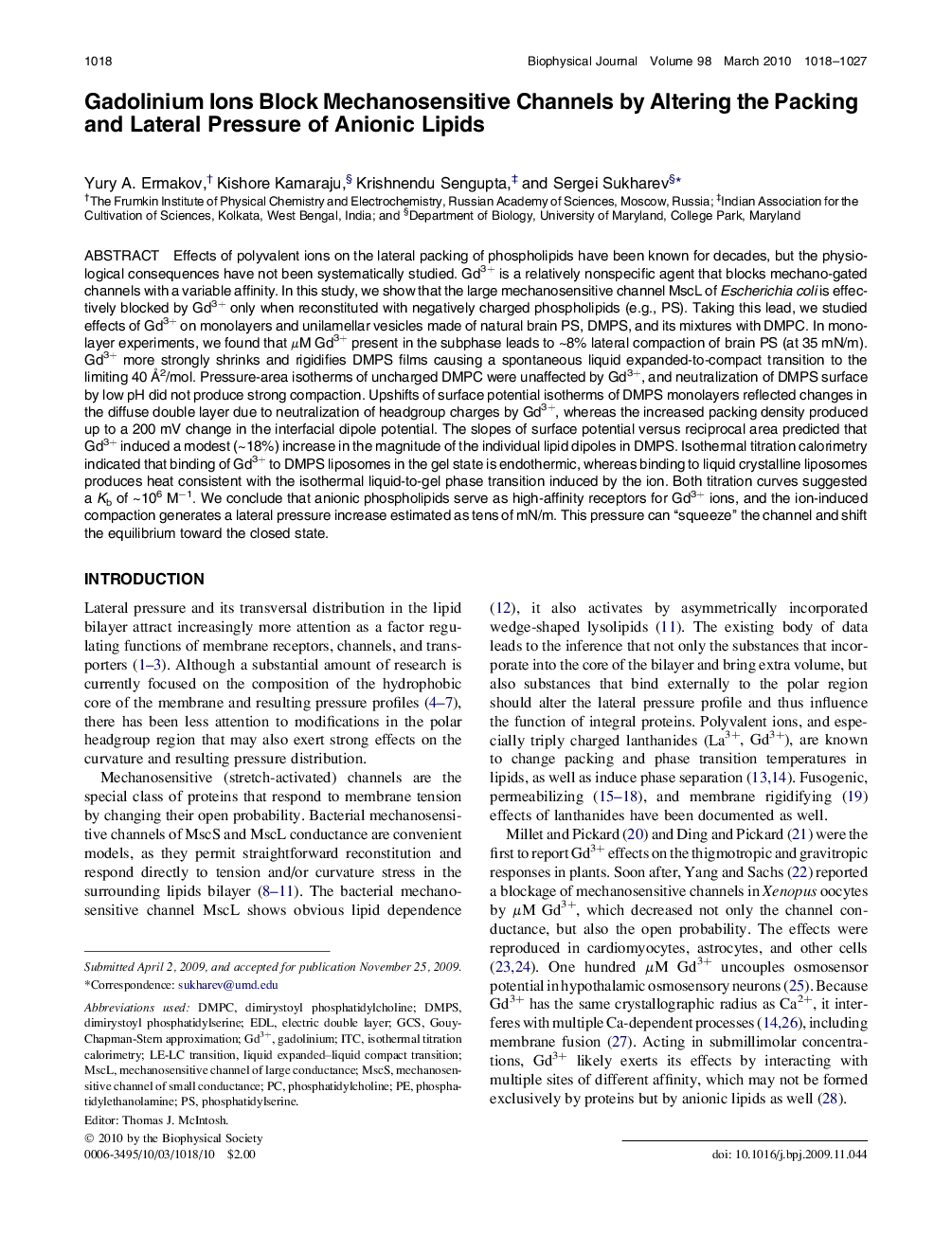| Article ID | Journal | Published Year | Pages | File Type |
|---|---|---|---|---|
| 1956146 | Biophysical Journal | 2010 | 10 Pages |
Effects of polyvalent ions on the lateral packing of phospholipids have been known for decades, but the physiological consequences have not been systematically studied. Gd3+ is a relatively nonspecific agent that blocks mechano-gated channels with a variable affinity. In this study, we show that the large mechanosensitive channel MscL of Escherichia coli is effectively blocked by Gd3+ only when reconstituted with negatively charged phospholipids (e.g., PS). Taking this lead, we studied effects of Gd3+ on monolayers and unilamellar vesicles made of natural brain PS, DMPS, and its mixtures with DMPC. In monolayer experiments, we found that μM Gd3+ present in the subphase leads to ∼8% lateral compaction of brain PS (at 35 mN/m). Gd3+ more strongly shrinks and rigidifies DMPS films causing a spontaneous liquid expanded-to-compact transition to the limiting 40 Å2/mol. Pressure-area isotherms of uncharged DMPC were unaffected by Gd3+, and neutralization of DMPS surface by low pH did not produce strong compaction. Upshifts of surface potential isotherms of DMPS monolayers reflected changes in the diffuse double layer due to neutralization of headgroup charges by Gd3+, whereas the increased packing density produced up to a 200 mV change in the interfacial dipole potential. The slopes of surface potential versus reciprocal area predicted that Gd3+ induced a modest (∼18%) increase in the magnitude of the individual lipid dipoles in DMPS. Isothermal titration calorimetry indicated that binding of Gd3+ to DMPS liposomes in the gel state is endothermic, whereas binding to liquid crystalline liposomes produces heat consistent with the isothermal liquid-to-gel phase transition induced by the ion. Both titration curves suggested a Kb of ∼106 M−1. We conclude that anionic phospholipids serve as high-affinity receptors for Gd3+ ions, and the ion-induced compaction generates a lateral pressure increase estimated as tens of mN/m. This pressure can “squeeze” the channel and shift the equilibrium toward the closed state.
